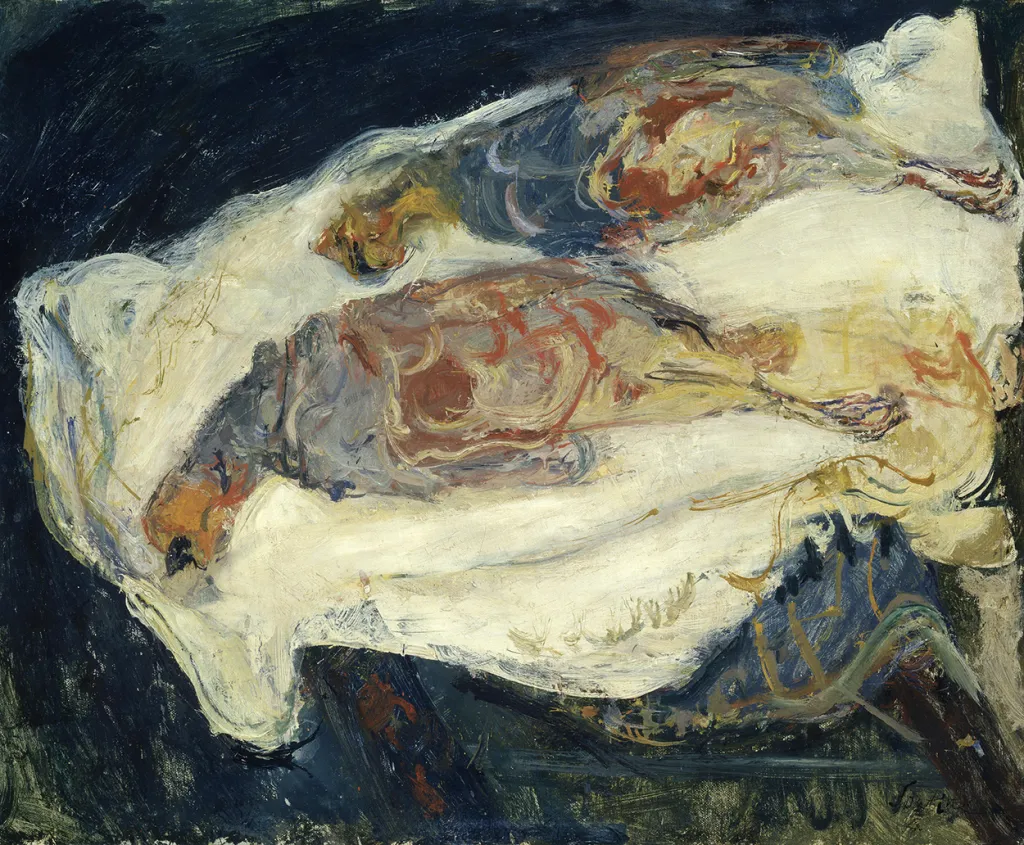It takes a strong constitution to really look at a painting by Chaïm Soutine: following the artist’s strenuous, experimental brush demands an almost physical effort, never mind stomaching the gut-churning carcasses they depict. His canvases can be dizzying, as in his early landscapes transforming a sleepy Pyrenean town into a vertiginous mass of color threatening to escape the frame. They can also be uncomfortably visceral, as in his depictions of sides of beef strung up in his Parisian studio; Soutine occasionally doused the meat with fresh blood, injecting a jolt of vermillion into the image. His portraits cut to the quick, reaching beyond appearances to lay bare an individual on the canvas in trembling form.
In her new biography, Chaïm Soutine: Genius, Obsession, and a Dramatic Life in Art, Celeste Marcus has committed herself to this intensive looking, feeling her way through Soutine’s paintings and toward an account of the artist himself. Yet very little evidence of Soutine’s life survives. He kept no journal or diary, made no statements about his work, and his few surviving letters are primarily matters of logistics. He was apt to destroy work he didn’t like and prone to cutting off friendships at the slightest offense. Still, Marcus argues that Soutine’s oeuvre is all we need to understand this artist, who was passionately, even “monomaniacally,” dedicated to his work.
Basic Books Group
Marcus is unwriting the story of Soutine as much as she is writing it. The distortion of his paintings has often been conflated with a disturbance in his self, one tied to the condition of being an Eastern European Jew in the years leading up to WWII. No less a thinker than Elie Wiesel has read the tragedies of history into the turbulence of Soutine’s brush. But Marcus sets the painter apart from the historical context in which he lived, defining his work by its unrelenting life force rather than the specter of death that surrounded him.
Soutine’s life was not without personal struggle. He was born poor, in a village outside of Minsk (Belarus). He fought hard to become an artist—literally, at one point, when his older brothers beat him for refusing to adopt a more practical profession. At the age of 20 he moved to Paris, where he often had to choose between purchasing paint or sustenance (he chose paint). But Soutine’s life also had its pleasures, joys, and notable supporters, including painter Amedeo Modigliani, a fellow inhabitant at the Montparnasse artists’ colony La Ruche.
Soutine had success, too, especially after the American collector Albert Barnes invested heavily in his work in 1922. The purchase transformed Soutine’s reputation, launching him into a new cadre of artists and placing his work alongside Matisse and Picasso on Barnes’s Philadelphia walls.
Chaïm Soutine: Still Life with Rayfish, 1923.
Public Domain Image Library
Marcus immerses herself, and the reader, within Soutine’s paintings, meticulously describing the “pearl-like” brushwork, the “hot and vivid” colors, the construction of a composition as a form of “world building.” She articulates the success of Soutine’s work as an internal holding together. In Group of Trees (1922), for example, every part of the image works according to a relational logic, creating a rhythmic relationship between the trees and the air that moves between them, alternating blues and browns arcing in chaotic harmony. Soutine developed this relational logic out of the practice of painting itself, creating a wholly original artistic language. Still, every art writer faces the inherent limitations of translating images into words, and the sheer intensity of Soutine’s work often leaves Marcus with such vagaries as “the flow of vitality” and “intelligent energy is the mystery and miracle of Soutine’s work,” vagaries that will be forgiven the next time one stands before a Soutine and feels its pulsing force.
Soutine’s representational canvases may have fallen out of favor in the AbEx fervor of the 1950s, but they are certainly back in now. Artists including Cecily Brown, Chantal Joffe, Dana Schutz, and Amy Sillman cite his influence, lauding the possibilities he created for a kind of painting committed to the vibrant materiality of paint itself. It is, Marcus points out, the great paradox of Soutine’s work that such raw and brute physicality manages to become almost spiritual; as one of the few other writers on Soutine, Élie Faure, put it, “Soutine is one of the rare religious painters the world has known because Soutine’s material is one of the most carnal that painting has expressed.” It is worth following the artist into the depths of his turmoil for the transcendence that results.
